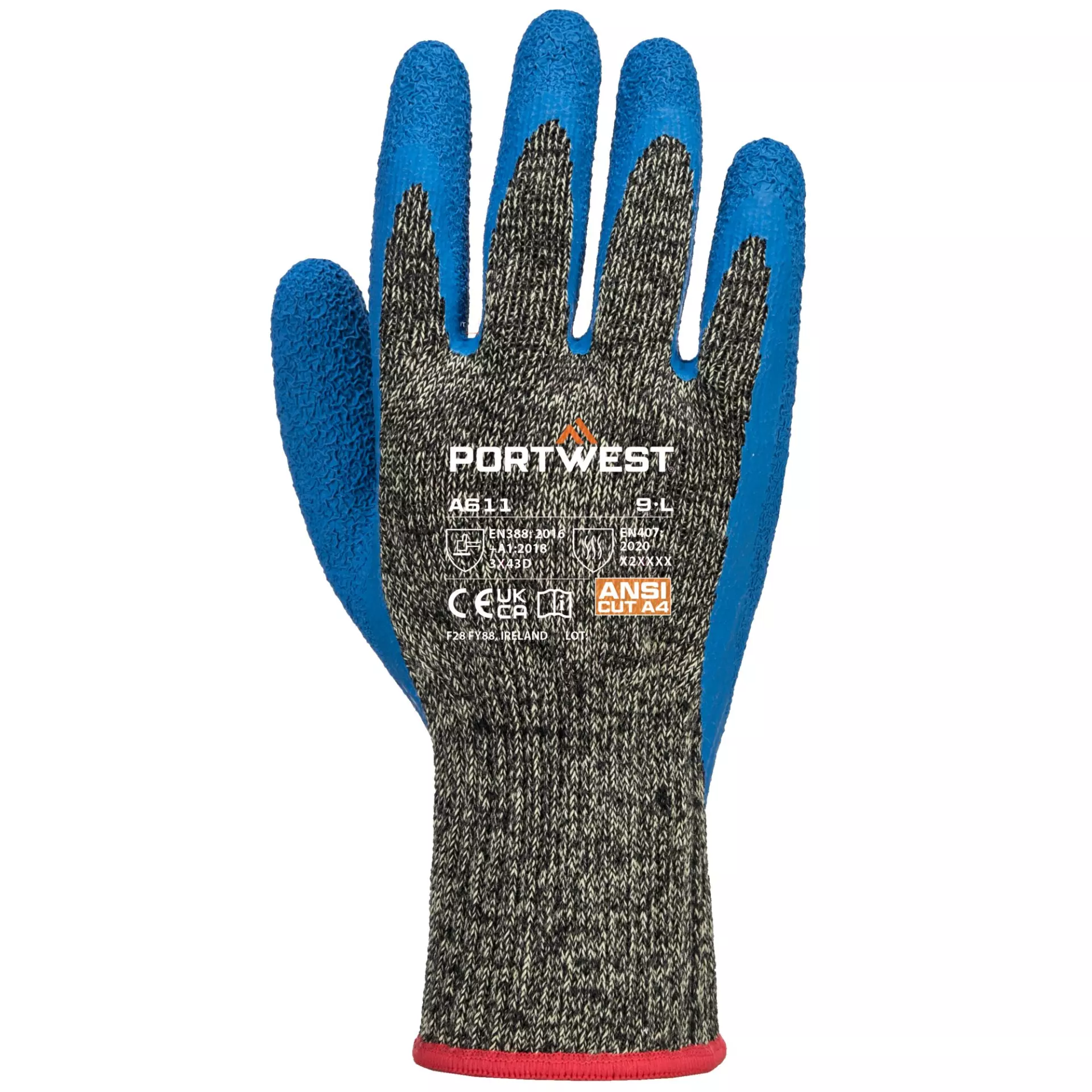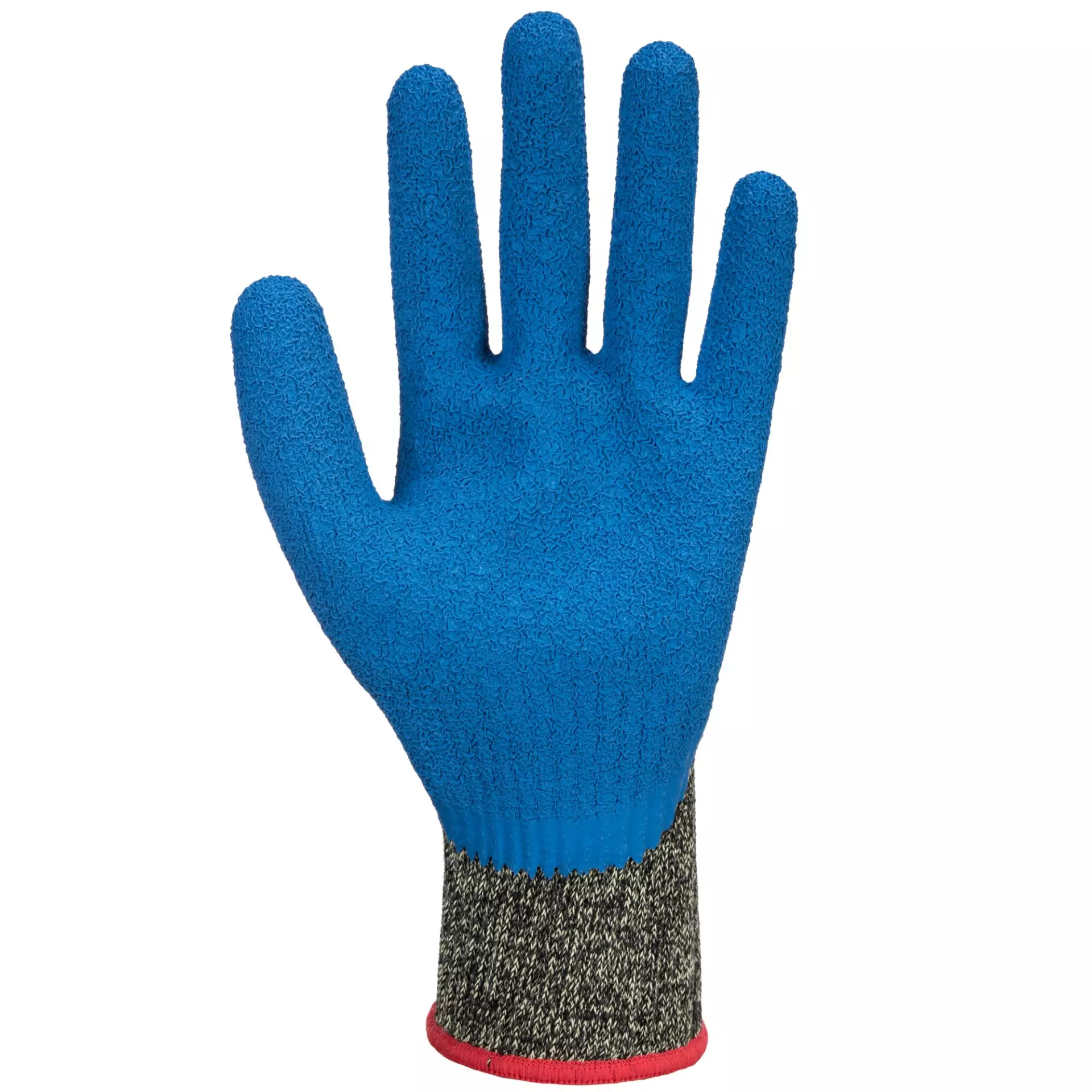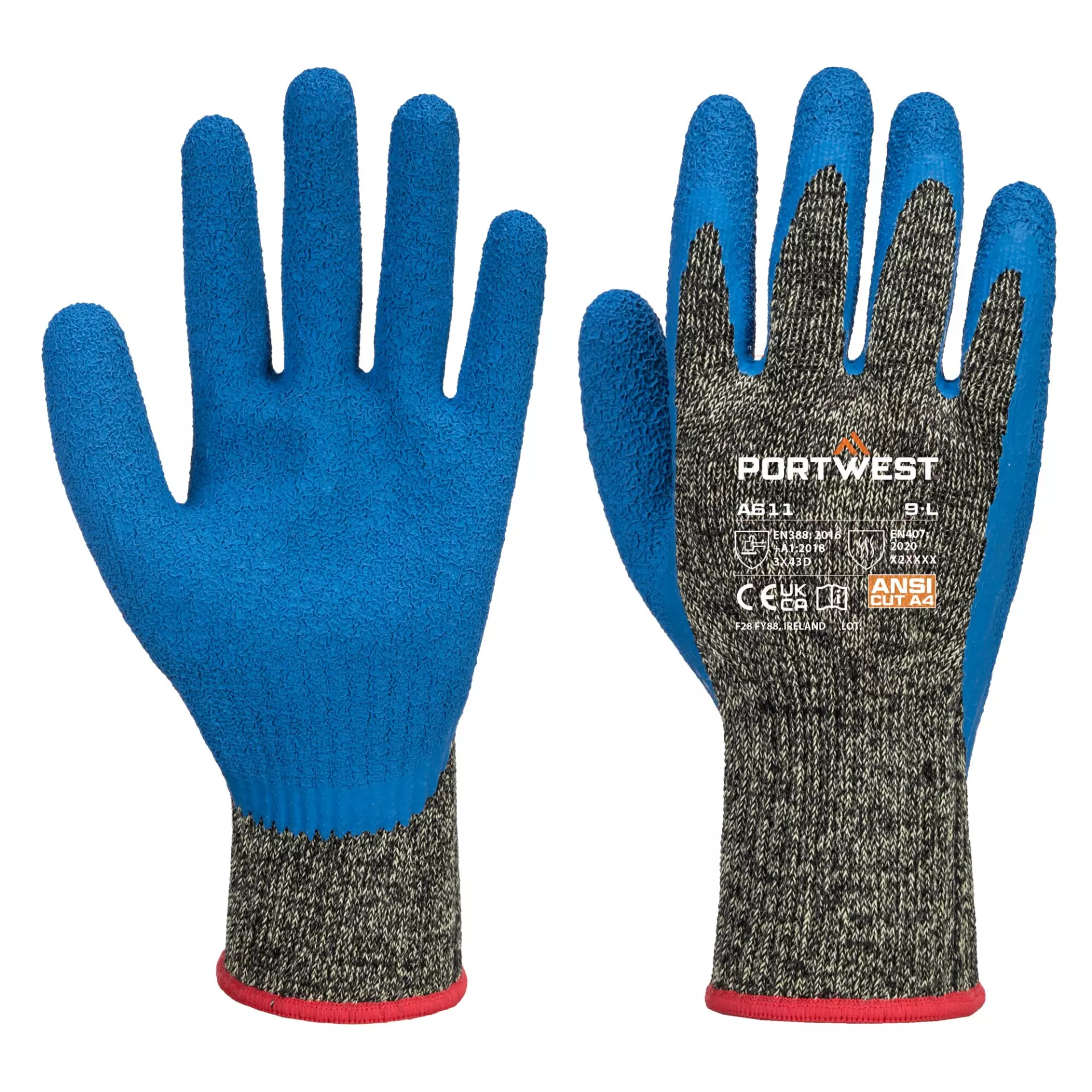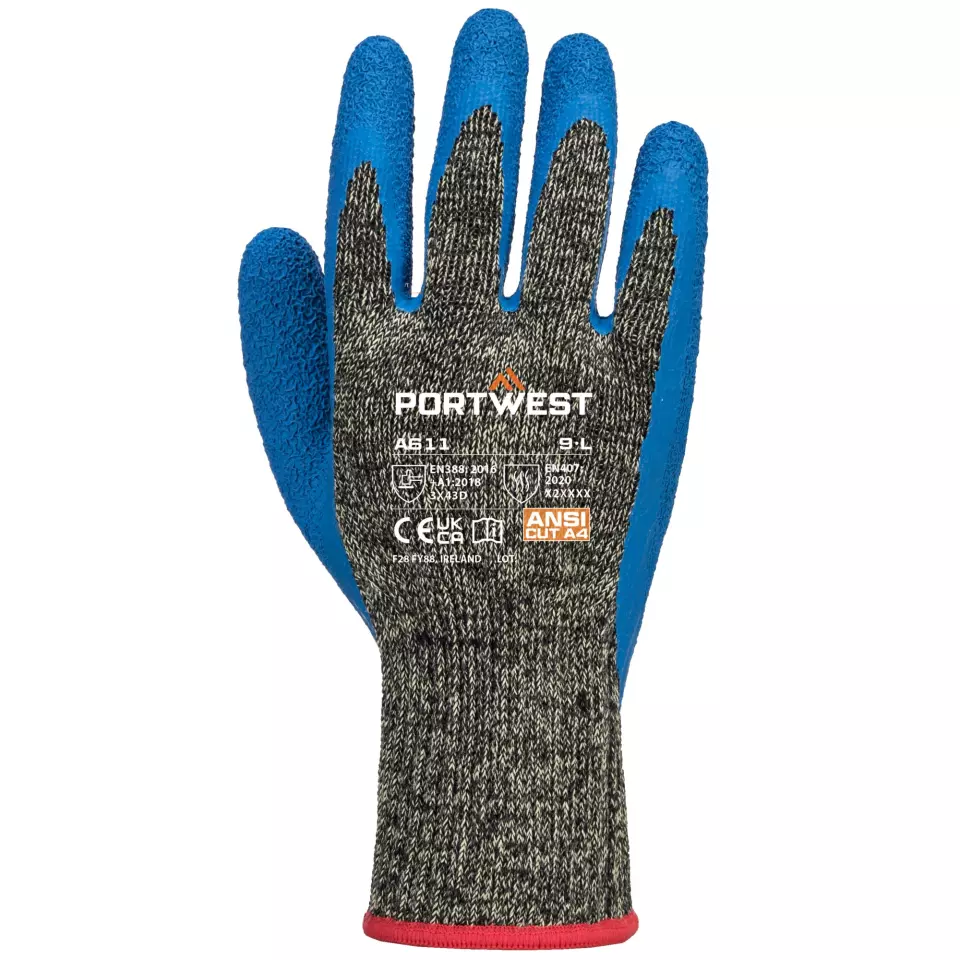


Features You'll Love

EN 388 · Tear Resistance Level 4, Puncture Resistance Level 3, Cut Resistance, ISO 13997 Level D
Offers the highest level of protection against tearing, withstanding a strong force before ripping.
Withstands strong pressure from sharp objects like nails or thick splinters.
Offers strong protection against cuts from utility knives, glass edges, and sheet metal.

EN 407 · Radiant Heat Level 2
This product provides protection against radiant heat, delaying heat transfer for at least 20 seconds. It is suitable for situations where the hand may be exposed to sources of intense, invisible heat without direct contact with a flame.
Portwest
Aramid HR Cut Latex Glove, Black/Blue, 12 pairs
Aramid HR Cut Latex Glove, Black/Blue, 12 pairs
5 / 5
86,75 €
Price per 12 pairs
7,23 € / pair
Choose size
Free delivery
Features You'll Love

EN 388 · Tear Resistance Level 4, Puncture Resistance Level 3, Cut Resistance, ISO 13997 Level D
Offers the highest level of protection against tearing, withstanding a strong force before ripping.
Withstands strong pressure from sharp objects like nails or thick splinters.
Offers strong protection against cuts from utility knives, glass edges, and sheet metal.

EN 407 · Radiant Heat Level 2
This product provides protection against radiant heat, delaying heat transfer for at least 20 seconds. It is suitable for situations where the hand may be exposed to sources of intense, invisible heat without direct contact with a flame.
Product description
Professional-grade protective gloves featuring a durable aramid liner with crinkle latex coating for superior cut protection and grip performance. These 10-gauge gloves provide Level D cut resistance according to EN388:2016 standards and contact heat protection up to 250°C for 15 seconds. The combination of aramid fiber construction and latex coating ensures excellent durability and secure grip in both wet and dry conditions.
Product Features:
- Durable aramid cut resistant liner with excellent abrasion resistance
- Crinkle latex coating for strong secure grip in wet and dry conditions
- 10-gauge liner construction
- Contact heat protection up to 250°C for 15 seconds
- Level D cut resistance
Technical Details:
- EN388:2016 cut level D protection
- Dexterity rating: Level 5
- CE certified and UKCA marked
Recommended Applications:
- Glass industry applications
Standards:
- EN ISO 21420:2020 Dexterity 5
- EN 388:2016 + A1:2018 (3X43D)
- EN 407:2020 (X2XXXX)
- ANSI/ISEA 105:2016 CUT Level (A4)